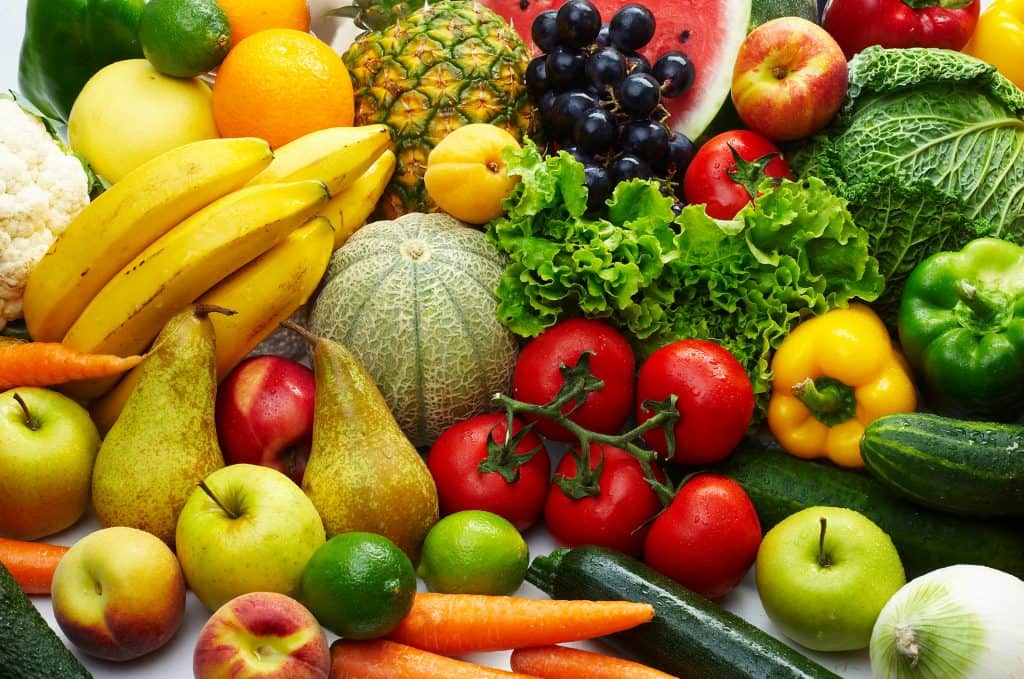A healthy diet means eating more fresh food
If we follow a diet full of fresh food, we will have a longer and healthier life.
But there is fresh, and then there is really fresh. The nutrients in fresh food convey their health-giving properties. Consequently, you can achieve the greatest benefits when those nutrients are at their highest.
The more a food is transported, handled, stored and processed, the lower its nutrient levels. Nutrient losses occur with every freeze and thaw cycle (transported in the back of your car, leaving the packet out, etc) and fresh food loses even more nutrients during cooking.
Tips for getting the most out of your fresh food
- The best way to buy and store fruit and vegetables is whole. Buying freshly-cut fruit and vegetables may seem like an attractive option, but only if you’re ready to eat them. Cutting them up and exposing their contents to light results in the loss of nutritional properties. The less processed a food is, the higher the nutritional value.
- Only buy fresh what you can eat within the next five days. When you run out, walk to the shop and buy some more. Exercise and nutrition at the same time! The longer we leave fresh food, the more likely it is to lose nutrients. Putting it in the fridge slows this process, but does not stop it.
- Choose your fruit and vegetables carefully. Supermarkets normally have a wide range, so be picky. Choose the freshest of the fresh. Any outward sign that it is past its prime usually means that its nutrients are also past their prime. Buy early in the day from a local farmer’s market that brings in fresh produce. Arriving early means you get the pick of the bunch, and cooler temperatures means the food stays fresher for longer. If you have a long drive home, keep an esky in your car for storage. A hot car trip home can wilt many vegies and damage their nutrients.
- Store fruit and vegies in different drawers. This is because ripe fruit releases chemicals that cause some vegies to lose their nutrients quicker.
- Frozen foods are not devoid of benefits. Frozen vegetables are often nutritionally better than so-called fresh food imported out-of-season from distant climates. In fact, carotenes, which are sensitive to light, are preserved better in the dark of a freezer than exposed to light on a pantry shelf. This is why frozen peas may have more carotene than fresh peas. Overall, the level of nutrients is about the same for both frozen and off-the-shelf vegetables, although both have lost more nutrients than truly fresh produce. But any vegetables are better than no vegetables. Having fruit and vegetables ready to eat in your fridge or freezer, rather than ice cream, may make it easier for us to make healthy choices.
Slow foods® are those that are seasonal, local, organic and whole
Foods that are in season are more likely to be fresh and thus richer in nutrients. Where possible, buy local produce, which has normally been subject to less storage and handling. Imported food may look peachy, but it has probably been on the road a lot longer.
Modern farming techniques involve the use of synthetic herbicides, fungicides, insecticides and other chemicals to increase crop yields or quality. Nearly two out of every three products on the supermarket shelf contains pesticide residue. The highest levels are often seen in foods that are considered healthy, such as juices and fresh fruit and vegetables, especially strawberries, stone-fruit, tomatoes, lettuce and capsicum.
Organic fresh food (grown without hazardous chemicals) often has 20-40% greater nutrient content than non-organic products (and is usually grown locally with minimal processing and handling). The greater concentrations of phytochemicals in organic food not only contribute to wellbeing, they also improve flavor.
In addition, organic farming is better for the environment and involves more sustainable farming practices.
Simple tips for going organic
- Substitute those foods that often have the highest chemical residue. The ones to think about are strawberries; capsicums; stone-fruit such as apricots, cherries and peaches; spinach; lettuce; grapes; carrots; apples; pears; celery; and green beans.
- Substitute those foods that you eat most often, e.g. dairy products, eggs, meat, and poultry.
- Substitute those packaged goods in your pantry, e.g. cereals, rice, pasta, canned legumes.
- Think about growing fresh herbs in pots around the house. These provide essential phytochemicals with antioxidant qualities that add flavor and interest to any home-cooked meal or salad.
Last reviewed 02/Jun/2017
Editor
Latest posts by Editor (see all)
- Oily fish and diabetes prevention - 04/06/20
- Manage the andropause - 11/12/17
- Testing testosterone levels - 07/12/17
